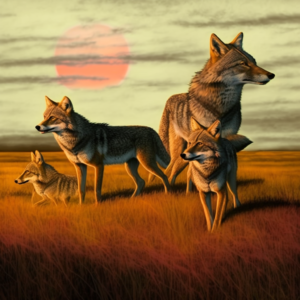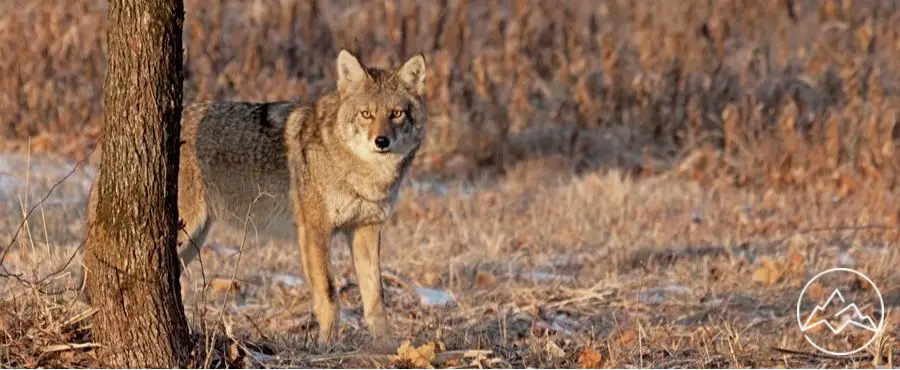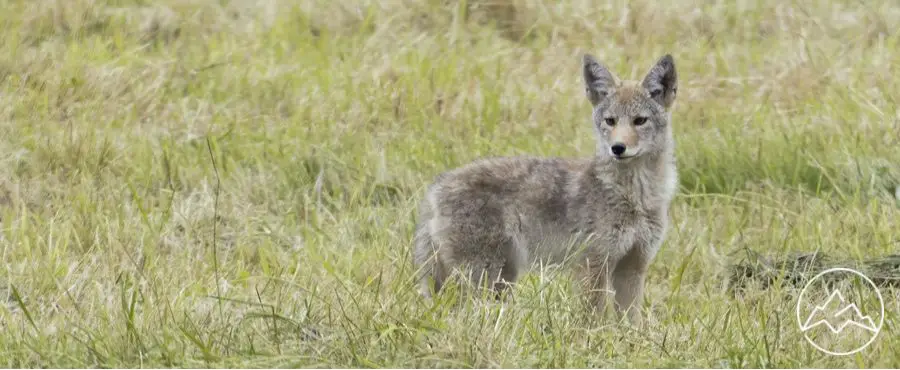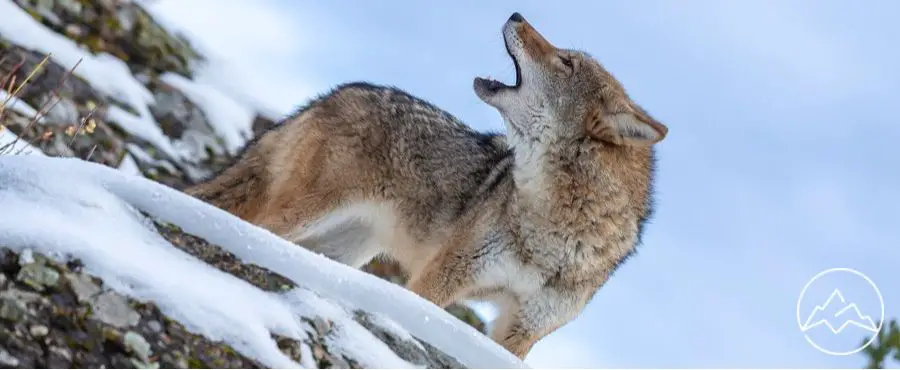Although the basics of coyote hunting are similar to other predatory animals, the details can make all the difference in whether or not you’re successful. In this short guide, we’ll give you tips on ways to scout, the gear you’ll need, ways to perfect your calling technique, and a quick way to assess your potential success as a coyote hunter.
How to scout your coyote hunting location
One of the most important things to consider when you’re hunting coyotes is your location. Coyotes have keen senses, are intelligent, and are extremely wary of anything that seems out of place. Because they’re easy to spook, finding areas with perfect positioning and excellent camouflage is critical for any predator hunting, and coyotes are no exception.
Personal camouflage that covers all of your exposed skin, like gloves and a face veil or camouflage cream, will help to hide your location. This really applies to all predator hunters, not just those going for coyotes.
Pick an area where you:
- Are comfortable and can stay as still as possible for extended times
- Can be completely silent
- Are downwind from coyotes
For safety, make sure that you set up somewhere that gives you clear sight-lines around you. One of the behaviors that make coyote hunting challenging is that they like to circle behind their prey and approach it from downwind. This allows them to catch your scent early, often before you’ve spotted them.
This is dangerous for hunters because they can sneak up on you before you realize they’re approaching. When they find a human rather than an animal, as expected, it could trigger aggressive behavior. Protect yourself by finding a position where you can see them approaching.
Gear you’ll need to hunt coyotes
The equipment you’ll need will depend on a few factors including your personal preference, the terrain, and the time of year that you hunt. In general, the gear you’ll need will fall into three main categories:
- Apparel and camo
- Weapons
- Calls – an electronic caller is our strong preference
When you’re deciding the best way to hunt coyotes, your terrain will help you determine the weapon that’s right for the job. Many hunters prefer a rifle because it’s easy to use and versatile. A caliber of between .220 and 6 mm can get the job done on even the larger predators.
Another popular choice is a semiautomatic with .223 ammo because of their accuracy, stopping power, and natural ability to fire a second shot if needed.
A third option is to go coyote hunting with either a large compound bow or crossbow. Among deer hunting enthusiasts, this is a popular choice, in part because it keeps your skills sharp in the off-season.
Check out out guide on the best hunting boots to keep your feet warm and dry all year.

Master coyote calling
Coyote calling is one of the trickier parts of the process, and two crucial components of getting it right are the right technique and the proper equipment. It’s also important to be careful when you’re luring your prey. Remember, coyotes are predatory animals, and while they may only grow to around 50 pounds at most, they are still extremely dangerous when they feel threatened.
Not only can they deliver a nasty bite, but they may also carry rabies or other viruses that could be fatal. Use caution and keep your head on a swivel to avoid becoming the prey.
Several different calling techniques are effective on coyotes. One of the most popular and easy to use in any season is a rabbit squealer. As an animal that preys on other small species, any noise that mimics something small, vulnerable, and in distress can capture a coyote’s interest.
When you’re learning how to hunt coyotes, you’ll want to do some research to determine when the mating season is in your area. For most, it’s during midwinter, which means you can take advantage of these natural instincts to lure males to the area. Buy a coyote howler and invest time in learning how to mimic the call of females looking to mate to capture the attention of the males nearby.
Outside of the mating season, you can also use coyote calls to get attention. As curious, vocal, pack animals, most coyotes will react to sounds like mimic other males challenging their territory or a pack-mate in distress. Learn how to make some of these noises to draw them to your position.
The most crucial element to delivering a successful call is making it sound as realistic as possible. Spend time listening to recordings, and consider setting up a decoy to draw their visual attention and match what they believe they’re hearing. We specifically recommend fawn recordings or rabbit distress calls.
Spend at least 20 minutes calling in your location before moving to the next, and make sure you are as stealthy as possible when you relocate.Assess potential coyote hunting success
It’s helpful to have some simple criteria that allow you to rank and determine if you’ve found the ideal location for your coyote hunt. Use these four factors to decide if you’ve found a place worth setting up for the day.
Are there tracks or signs of coyotes in the area?
The best location is all but worthless if there aren’t coyotes in the area. The easiest way to confirm that you’re positioned somewhere that could equal success is to look for fresh tracks on the ground.
Another sign that could point to a prime location is a recent kill, like deer or smaller prey animal in the area.
Is there adequate cover to conceal your position?
Camouflage only works well if you select an area with enough cover that you can blend in. Search for options that have natural places you can position on the terrain or near brush that will conceal you when a coyote is approaching.
If you’re able to find a spot above a valley, that could be ideal hunting grounds. Even better if the bottom has brush and plant life that will help the coyote feel like he’s concealed when roaming through, but that also gives you the opportunity at a clear shot from above.
Can you get to the area undetected?
One of the greatest challenges, and also most critical considerations, is whether or not you can get into position without being spotted. The perfect location will provide terrain cover that hides your vehicle and gear and allows you to settle into your spot without coyotes seeing, hearing, or smelling you before you start calling.
Is your spot at a higher elevation than your prey?
If you’re able to find a hunting position that elevates you from the rest of the terrain, you’ll be better able to hide your scent and see coyotes approaching from all angles. These types of positions are challenging to locate but could yield some of the best results when used in combination with a lure at ground level.
FAQs About Coyote Hunting
What are the best times to hunt coyotes?
What type of equipment is necessary for successful coyote hunting?
Are there any special techniques that should be used when trying to locate and call in coyotes?
What safety precautions should be taken while hunting coyotes?
Are there any effective methods for tracking wounded or escaped coyotes after the shot is fired?
Prepare for your coyote hunting trip
Now that you know the basics of the techniques, gear, weapons, calling, and location scouting that can help you find a coyote, it’s time to prepare for hunting season. Follow these coyote hunting tips to have a successful trip. Make sure you check out you local state laws (in the United States) to confirm that you’re ok to hunt. In many areas, coyote hunting is open year-round with the proper hunting license. Always check your local hunting regulations first!






